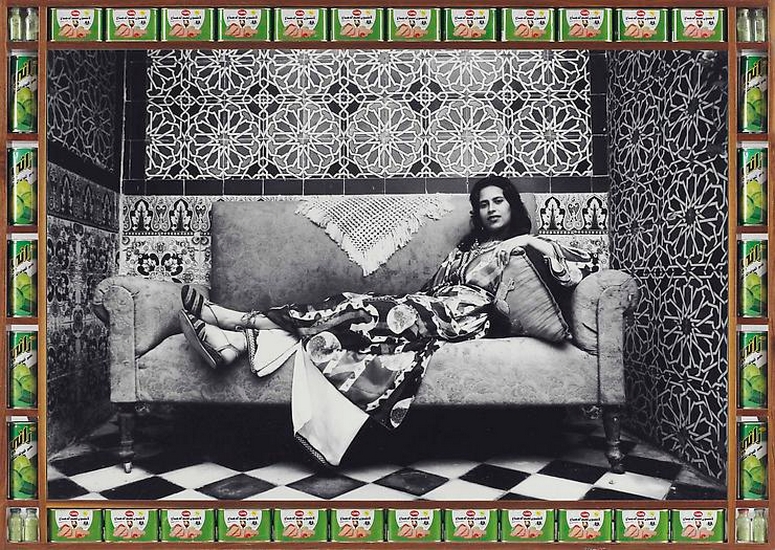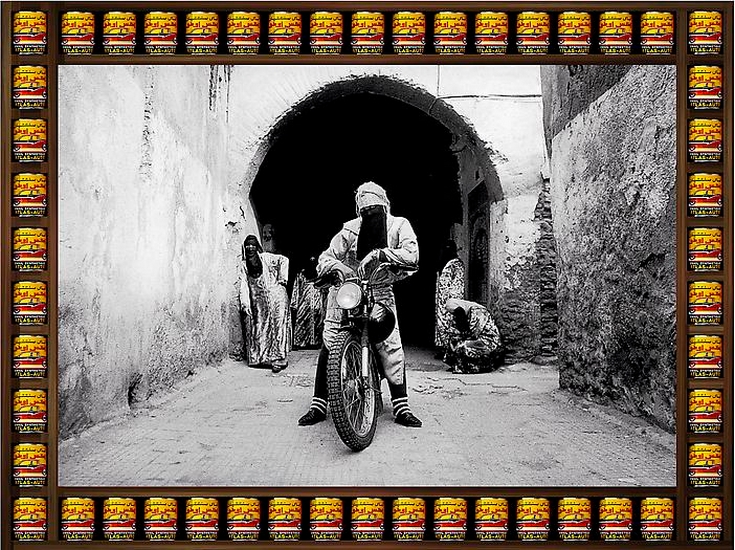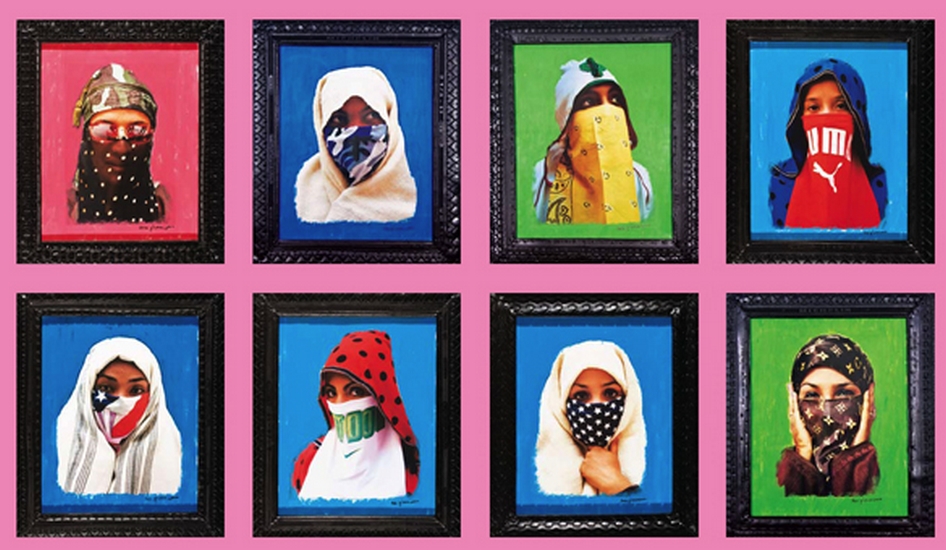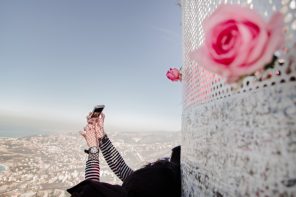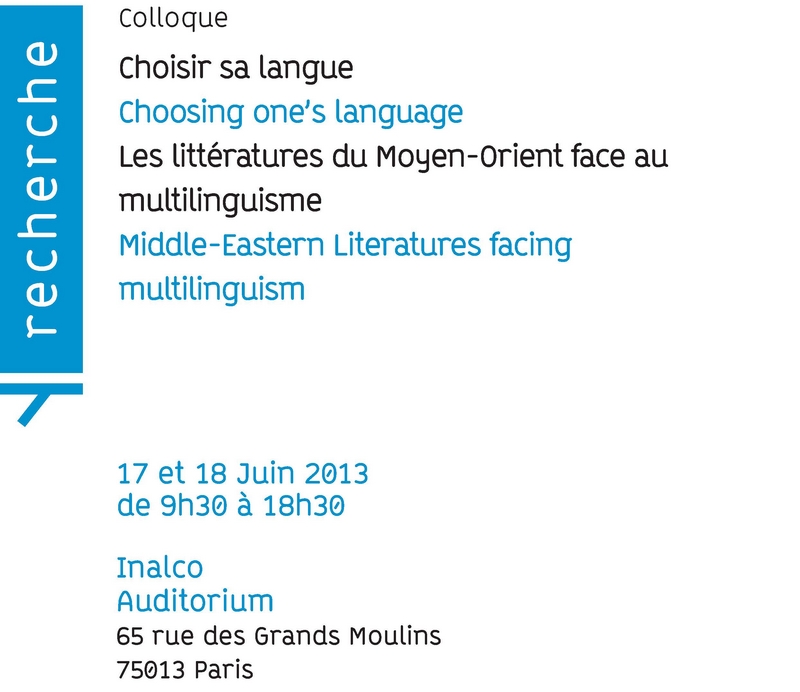It is commonly admitted that pop art is a reflection of urban environment and mass media. Pop artists succeeded in revealing the hidden beauty and aesthetics of daily and forgotten objects.
Campbells’ soup cans or Coca Cola bottles had never been iconic before Andy Warhol’s work immortalized them using acrylic. For a long time, this movement has been considered as a critic of the consumer society and its representatives drew their inspiration directly from the American popular culture. But what if artists with different sensitivity, background and culture gave birth to a new similar style? What would it look like if “exotic” products were transformed into new symbolic icons?
Few days ago, the 2014 PULSE Prize was given to the native moroccan Hassan Hajjaj. Kathy Basttista (Director of Contemporary Art at Sotheby’s Institute of Art NY), Paddy Johson (founder and Editorial director of Art F City) as well as other musuems’ directors and curators succumbed to the satiric mood and kitsch composition of the My Rock Stars portrait series. As you can imagine, this international recognition increased the artist’s popularity and he is currently one of the most followed contemporary artists.
After leaving Larache, his native city at a young age, he moved with his family to London. He now navitgates between England and Marrakech when he is not invited to an exhibition opening somewhere. Permanently travelling between East and West, Hassan Hajjaj has been immersed into a variety of influences which contributed to building his multicultural bias. This explains the birth of his astonishing artistic work that celebrates both modernity and tradition. Hajjaj’s photography, collages, designs and installations are indeed an ode to beautiful and expressive fusion between his Moroccan origins and European culture. Moreover, this incredible self-taught artist is not afraid of materials and is a master of different genres. Making recycled furniture, album-coverage pictures or ready-to-wear dresses; his creations are diverse but his know-how is unique. Indeed, the master word that describes well all what his hands put into form is originality.
But, each time I have the pleasure to stare at his work I can’t help thinking of Andy Warhol’s universe. Actually, a number of art critics draw this same parallelism and I’m going to develop further why I see this comparaison as relevant. When you have a glance at Hajjaj’s portraits, you can easily distinguish two parts. The frame and the picture. Both are an expression of the colorful and highly dynamic world of Hajjaj that is highly influenced by his North African roots. If we focus on the frame composition, we can notice the use of the serigraphy technic, a direct heritage of the pop-art movement. Yet, the objects are really used in a repeated way to compose the frame and are not only drawn. Sometimes, the frame can also use some fabrics like painted straw (that popular Moroccan families use as a mat) or be just painted in acrylic (that was also often used by Warhol as a material that symbolizes the industrial world, since acrylic is used for painting cars).
Aicha’s tomato cans and other Moroccan grocery products replace the Heinz, Kellogs and Brillo packaging. This mention to the advertisement industry appears to be an ironic vision of our society and the use of repetition trivializes the object. While Warhol started his artistic path in the advertisement world and worked for magazines like Vogue and Glamour, surprisingly enough Hajjaj started in the fashion world as well. First as a retailer, he was able to anticipate trends and his shop quickly became the epicenter of London’s street-style. He then started working with stylists and up to now, he features his own clothing designs in his photographs. It is all the more funny since a large number of his pictures show luxury brand logos on fake items. This kind of products (Jellaba with Louis Vuitton sign, or a Gucci babouch/slippers) do actually exist on the moroccan souk-market, but when Hajjaj uses them on his vivid patterns, you can notice them better and appreciate his subtle sense of humour. When you see all his trendy niqabs and hijabs you actually forget about all the stereotypes about these islamic items and focus more on the image itself.
Hajjaj said himself that the pattern printing worked like a camouflage and started to use all the permanent in-and-out fashion motifs in the west (animal-prints, polka dots, camo…) on traditional long dresses mocking in that way all kind of stereotypes. As for his visual language, his images are definitely full of power and catchy bright colors (another fact that makes me think about Warhol). Red and green are for example very predominant in his last series of portraits of young moroccan women who move in the city of Marrakech on their motorcycles. According to me, the flowers, the Arabic characters, the mosaics and the different geometric forms that are mixed in the scenes makes the viewer feel an incredible energy. This energy is nothing but the current ‘joie de vivre’ of all these authentic women of their time that wear local Islamic fashion but have a daring character and a modern state-of-mind.
Thus, each time I see a Hajjaj portrait I can only smile and feel more alive. As far as I’m concerned, the details of its photographs remind me the warmth, the noise and the smells of the old medina. A bit of street-style and a HipHop background are the ingredients of Hajjaj’s job that challenges excellently the outdated cliché that people might have about Morocco and the Islamic world in general.
In a nutshell, Hassan Hajjaj’s work appears to be a continuity of the pop-art movement. It is true that the artist claims his independence saying that he is “a big fan of Warhol but he never tried to emulate him. » He adds » I just do what comes naturally and it’s a big compliment to be compared to him.” But I personally see his work as an extension of Warhol’s work with a Moroccan -« Dghmira » -sauce. The chosen themes and objects, use of serigraphy and bright colors as well as the ironic vision of society prove the strong similarity between these two incredibly talented and inspiring artists: Andy Warhol and Hassan Hajjaj. This makes him one of the best representatives of the current booming in the cultural boiling Arab urban scene that finds its influences in a tradition smartly adapted to the contemporary world.


